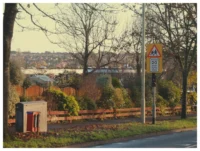- Home
- Articles
- Architectural Portfolio
- Architectral Presentation
- Inspirational Stories
- Architecture News
- Visualization
- BIM Industry
- Facade Design
- Parametric Design
- Career
- Landscape Architecture
- Construction
- Artificial Intelligence
- Sketching
- Design Softwares
- Diagrams
- Writing
- Architectural Tips
- Sustainability
- Courses
- Concept
- Technology
- History & Heritage
- Future of Architecture
- Guides & How-To
- Art & Culture
- Projects
- Interior Design
- Competitions
- Jobs
- Store
- Tools
- More
- Home
- Articles
- Architectural Portfolio
- Architectral Presentation
- Inspirational Stories
- Architecture News
- Visualization
- BIM Industry
- Facade Design
- Parametric Design
- Career
- Landscape Architecture
- Construction
- Artificial Intelligence
- Sketching
- Design Softwares
- Diagrams
- Writing
- Architectural Tips
- Sustainability
- Courses
- Concept
- Technology
- History & Heritage
- Future of Architecture
- Guides & How-To
- Art & Culture
- Projects
- Interior Design
- Competitions
- Jobs
- Store
- Tools
- More
Electrical Blueprint Symbols: A Guide to Understanding and Using Them Effectively
Discover the essential role of electrical blueprint symbols in simplifying complex plans, enhancing communication among professionals, and ensuring error-free electrical designs. Learn about key symbols, their meanings, and practical tips for reading blueprints effectively to streamline workflows, save time, and improve project outcomes with precision and clarity.

When it comes to understanding electrical systems, electrical blueprint symbols are the key to unlocking the bigger picture. These symbols act as a universal language, helping us interpret complex plans with clarity and precision. Whether we’re designing a new project or troubleshooting an existing one, knowing these symbols ensures we stay on the same page with contractors, engineers, and electricians.
Without these symbols, blueprints would be a maze of confusion. They provide vital details about wiring, circuits, outlets, and more, making it easier to visualize how everything connects. By familiarizing ourselves with these symbols, we can save time, avoid costly mistakes, and ensure every project runs smoothly. Let’s explore why these symbols matter and how they simplify even the most intricate electrical designs.

Table of Contents
ToggleImportance Of Electrical Blueprint Symbols
Electrical blueprint symbols streamline project workflows by providing standardized representations of components. They eliminate ambiguity by using universally recognized icons for devices like switches, lights, and receptacles. This standardization fosters clear communication among electricians, engineers, and contractors.
Errors decrease when symbols make blueprint interpretation more straightforward. Misunderstandings about wiring paths, circuit layouts, or equipment placements can lead to costly mistakes. Using consistent symbols reduces these risks, ensuring smoother project execution.
Symbols enhance troubleshooting processes by offering clear visual references. For example, identifying circuit breakers or specific outlets during system repairs becomes easier with defined markers. In maintenance scenarios, accurate symbols provide instant clarity without consulting additional documentation.
Design adaptability improves as symbols offer flexibility for modifications. Scenarios requiring updates, such as integrating smart systems or energy-efficient designs, benefit from easy-to-interpret layouts. Symbols allow prompt revisions without affecting the project timeline.
Common Electrical Blueprint Symbols
Electrical blueprint symbols represent various components essential for any electrical layout. These symbols ensure clarity and precision when designing or interpreting blueprints.

Outlets And Receptacles
These symbols signify power sources and charging points. Common symbols include the duplex outlet depicted as two parallel lines and the GFCI outlet shown with an added “T”. Specialized symbols represent weatherproof outlets or direct current receptacles. Recognizing these ensures proper placement during installations.
Switches
Switch symbols identify control mechanisms within a circuit. A single-pole switch often appears as “S”, while a double-pole switch uses “S2”. Three-way switches use “S3”, ensuring clarity for multi-location controls. Dimmer switches and push-button types have unique icons aiding in distinguishing various control options.
Lighting Fixtures
Lighting fixture symbols represent different types of lights. A ceiling light is often a simple circle, while recessed or track lighting uses more intricate notations. Emergency lights are marked distinctly with directional arrows or “E”. Correct interpretation guarantees proper illumination setup.
Wiring And Connections
Wiring symbols outline the physical connections between components. A straight line signifies a wire, while intersected lines with a dot indicate a connection. No-dot intersections show non-connected wires. Dashed lines represent underground or hidden wiring paths, critical for concealed systems.
How To Read Electrical Blueprint Symbols
Understanding electrical symbols requires recognizing their standardized shapes and functions. Each symbol conveys specific information about electrical components and connections, forming the foundation of blueprint interpretation.

- Identify symbol categories
Focus on major categories like outlets, switches, lighting, and wiring. For example, duplex outlets appear as small circles with parallel lines through them, while single-pole switches use simple “S” shapes. Categorizing helps narrow down the symbol’s purpose.
- Examine associated labels
Look for any text or alphanumeric codes near symbols, as these provide context. For instance, “120V” next to a receptacle indicates a standard voltage, while a “D” near a lighting symbol could signify dimmer compatibility.
- Review symbol groupings
Symbols placed together often represent connected systems. Examples include a light fixture symbol linked by wiring lines to switches or outlets, indicating how components operate within the circuit layout.
- Recognize line types and patterns
Solid or dashed lines connecting symbols represent different types of wiring, such as power lines or control circuits. A dashed line between switches and fixtures may indicate a multi-way control system.
- Use a legend or key
Refer to the blueprint’s legend for symbol definitions. Legends decode less common symbols like motion sensors or specialized outlets. Cross-referencing ensures consistent interpretation.
Reading electrical blueprint symbols becomes easier by combining knowledge of standard designs, contextual details, and visual cues on the documents.
Tips For Using Electrical Blueprint Symbols Effectively

- Understand Scale and Orientation
Align the blueprint with real-world dimensions by reviewing its scale and orientation first. Verify the placement of symbols relative to physical spaces to avoid misinterpretation.
- Use the Legend or Key Frequently
Reference the legend or key provided in the blueprint to match symbols with their meanings. This step ensures clarity, particularly when encountering less common or project-specific symbols.
- Organize Symbols Based on System Type
Group symbols by categories like lighting, power, or wiring systems. This simplifies the process of analyzing specific components and better identifies connections within a system.
- Cross-Reference Plans for Accuracy
Compare electrical blueprints with architectural plans to verify symbol placement. Misaligned interpretations often occur when blueprints are reviewed in isolation.
- Highlight Connection Paths
Trace wiring paths using the blueprint’s line types and patterns. Highlighting these paths confirms connections between elements and uncovers potential routing issues.
- Label Modifications Clearly
When making blueprint updates, label modifications with distinct notations. Clear changes prevent confusion during project execution.
- Involve All Relevant Stakeholders
Share the interpreted symbols and plans with engineers, electricians, and contractors. Collaborative reviews minimize miscommunication regarding system design and installation.
- Leverage Digital Tools
Use design software with integrated electrical symbols for precision. Digital platforms often include validation features to ensure symbol placement adheres to standards.
Conclusion
Understanding electrical blueprint symbols is essential for executing accurate and efficient electrical designs. These symbols offer a standardized way to represent complex systems, ensuring clear communication among professionals. By mastering this visual language, we can minimize errors, save time, and streamline project workflows.
Electrical blueprint symbols enhance project clarity with universally recognized icons for components like outlets, switches, and lighting fixtures. They simplify troubleshooting and design adjustments, making repairs and upgrades more efficient. Standardized symbols also help us adapt layouts easily when integrating new technologies or improving energy efficiency.
Leveraging these symbols effectively requires recognizing patterns, using legends for reference, and aligning interpretations with a project’s unique requirements. Employing these best practices ensures precise blueprint analysis, fostering stronger collaboration across teams and more successful project outcomes.
- blueprint symbols for electrical plans
- blueprint symbols for lighting and outlets
- electrical blueprint design
- Electrical blueprint symbols
- electrical blueprint symbols explanation
- electrical circuit symbols
- electrical design symbols
- electrical diagram symbols
- electrical drawing symbols
- electrical plan symbols
- electrical schematic symbols
- electrical symbol legend
- electrical symbols for wiring
- electrical symbols guide
- electrical symbols in architecture
- electrical system blueprint symbols
- how to read electrical blueprints
- interpreting electrical blueprints
- understanding electrical blueprints
- using electrical symbols effectively
Submit your architectural projects
Follow these steps for submission your project. Submission FormLatest Posts
Furniture Movers by the Hour: Complete Guide to Hourly Moving Services in 2025
Introduction Furniture movers by the hour are professional moving services that charge...
Where To Charge Rivian: Complete Guide to Charging Locations and Networks
Introduction Rivian electric vehicle owners can charge their vehicles through multiple charging...
Frank Gehry Architecture: Style, Innovation and Iconic Works
Frank Gehry is one of the most influential architects of our time,...
The Dialogue Between Islamic Architecture and Modern Design
Explore Islamic architecture and modern design: climate-smart strategies, case studies, and courtyards,...












Leave a comment